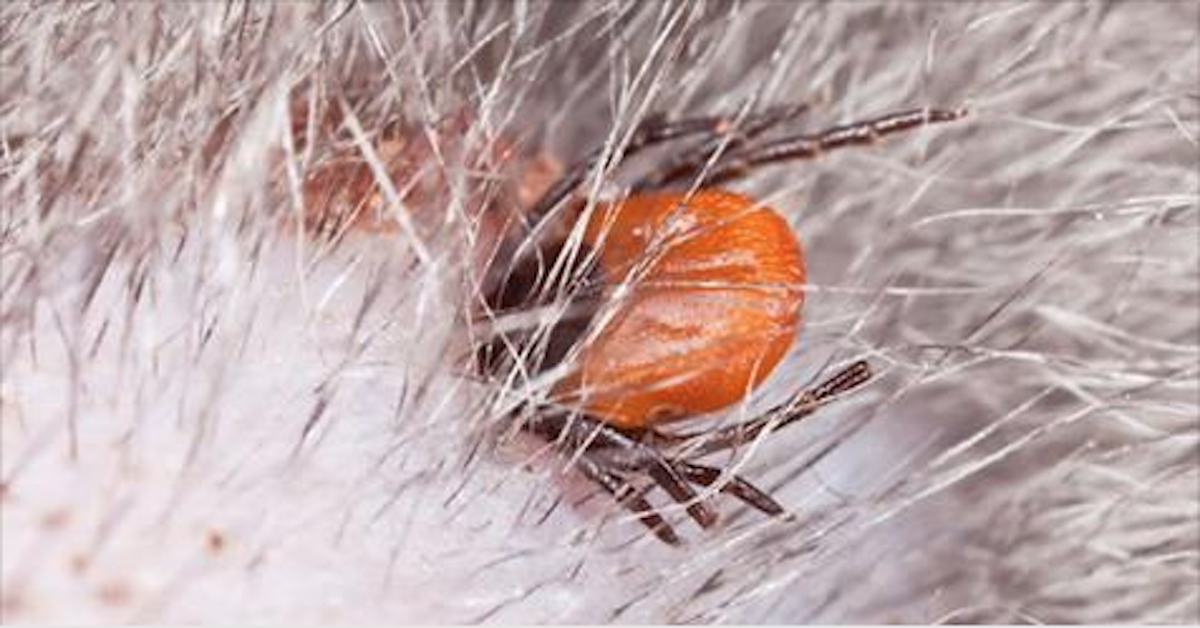Ticks are a major problem for both pets and humans because of the dangerous diseases they carry and transmit. Even when you take precautions (such as using tick preventative products), you may still find a tick on your dog or cat (or other household pet). A tick bite is typically seen as a bump or swollen area on the fur, with a tick burrowed just under your pet’s skin.
Prompt and proper removal of ticks is important in preventing an attached tick from transmitting an infection to your pet. It can take between 24 and 48 hours for a burrowed tick to infect its host, so removing it quickly is critical. For purposes of this article, we refer to the removal of a tick from a dog, but the same steps will apply to most pets.
If you have inspected your dog and found a tick burrowed on your dog’s skin, follow these steps to remove the tick safely. Note, if the tick is too deeply burrowed into your dog’s skin, or you are uncomfortable with removing the tick yourself, please take your dog to a veterinarian immediately so it can be removed safely.
Learning the proper way to remove a tick is very important because, if the pest is removed incorrectly, it can result in infection being “injected” into your dog’s blood stream. Incorrect removal can result in:
- The tick’s mouth parts being left behind in the skin – this can result in septic abscesses and serious blood infection.
- Compression of the tick’s abdomen – can cause tick to regurgitate the blood meal, injecting infective agents to into the blood stream of your dog
- Puncture of the tick’s body – again, can cause tick to regurgitate the blood meal.
Contrary to popular opinion, you do NOT want to use petroleum jelly, rubbing alcohol, oils /butter, paraffin, nail polish remover or any liquid solutions to stimulate the tick to release its grip. Do NOT apply a freezing agent, or burn the tick with a cigarette, lighter or match.
All these methods may get a tick to release its grip, but they also stress the tick and thereby significantly increase the chances of it infecting your dog.
There really are only two safe ways to remove an attached tick: with fine-tipped (precision) tweezers or with a tick-removal tool.
To begin, you will need the following items:
- Pair of latex or rubber gloves
- Clean pair of fine-tipped (precision) tweezers or a commercial tick remover, such as the Tick Twister
- Antiseptic
- Isopropyl alcohol
- Small container or zip-lock bag
1. Removing the tick:
Wear latex or rubber gloves while removing the tick to avoid contact with your skin. If gloves are not available, use tissue to protect your skin. Do not handle the tick with your bare hands, as you may infect yourself through breaks in your skin or through your eyes, mouth or nose.
If using tweezers:
- Gently grasp the tick as close to your dog’s skin as possible. Try not to pinch your dog’s skin. Be careful not to squeeze or squish the body of the tick.
- Pull outward in a straight, steady motion. Do not twist or jerk the tick, as this may leave the mouth parts embedded. If parts are broken off, remove any embedded mouth parts with tweezers or a sterilized needle.
- Make sure the entire tick is removed.
 Photo credit: DogHeirs
Photo credit: DogHeirs
If you’re using a tick remover:
- Gently press the remover against your dog’s skin near the tick.
- Slide the notch of the remover under the tick.
- Continue sliding the remover until the tick is caught in the small end of the notch and is pulled free. (The tick will remain in the bowl of the remover.) As tick removers vary slightly in function from each other, be sure to read the instructions on the manufacturer’s packaging.
2. Sterilize the bite site:
Clean the bite site on your dog’s skin with antiseptic and make sure to clean your tweezers or tick remover with isopropyl alcohol. Dispose of your gloves and wash your hands, too!
3. Preserve the tick:
Once the tick is removed, you will want to save the tick for identification and testing purposes, in case your dog develops symptoms of any illness.
- Drop the tick into a small container that contains isopropyl alcohol (the alcohol will quickly kill the tick). Or, put the tick in a sealed ziplock bag (preferably with preserving agent) and store it in a freezer.
- Mark the date on the container.
- If your dog begins displaying symptoms of a tick-borne illness, your veterinarian may want to identify or test the tick.
- Monitor your dog. If you are unsure as to when your dog may have been bitten, you may want to take your dog to a veterinarian for a check up.
4. Keep an eye on the bite area for infection:
If your dog’s skin remains irritated or infected, make an appointment with your veterinarian.
Watch your pet for symptoms of tick-borne diseases. Some symptoms include arthritis or lameness that lasts for three to four days, reluctance to move, swollen joints, fever, fatigue, swollen lymph nodes, loss of appetite, and neurological problems. If the area where you live has ticks, talk to your vet about the precautions you can take to protect your pets.
Check out the video below on how to properly remove a Tick. Please share this article with your friends and the pet parents you know!











